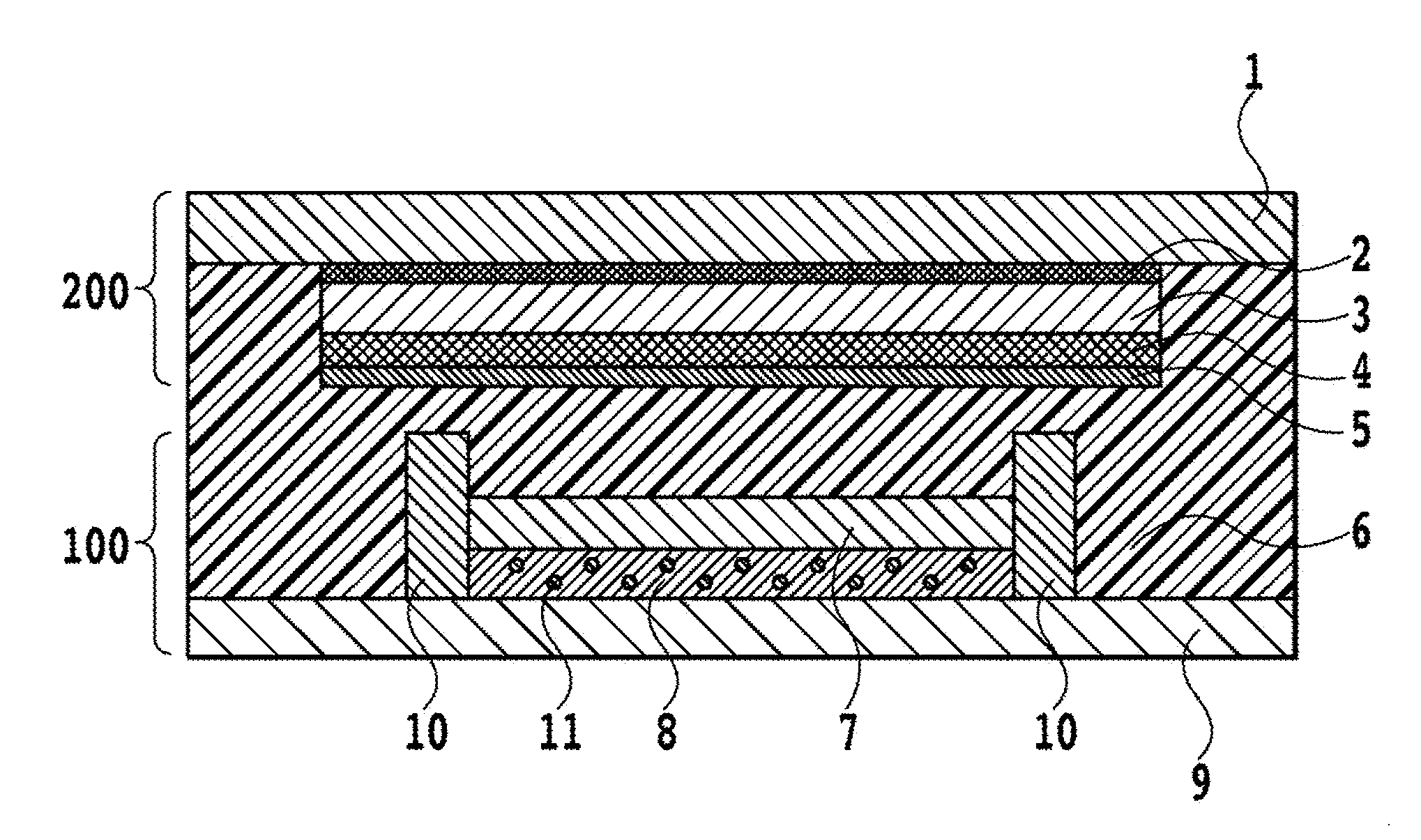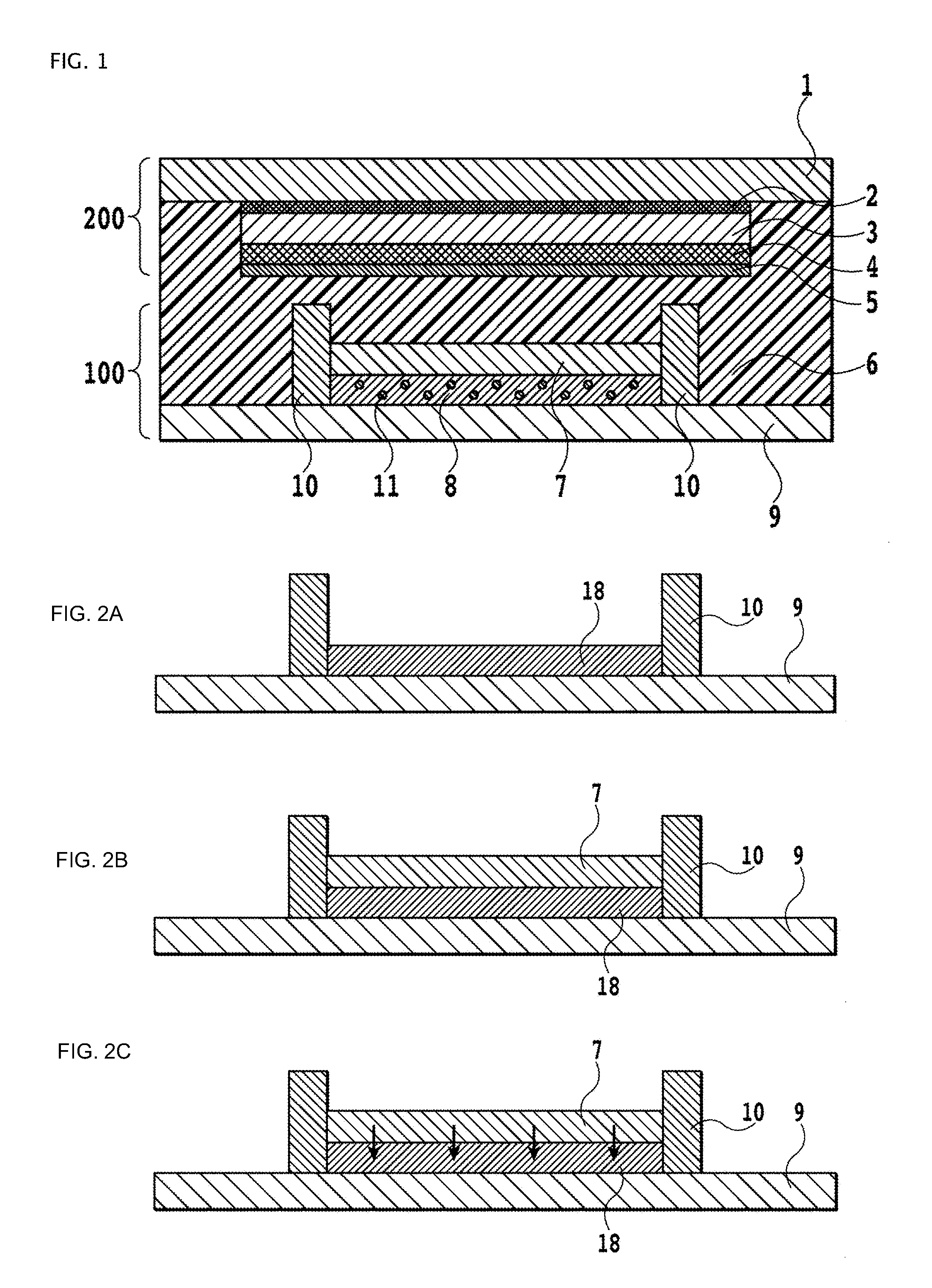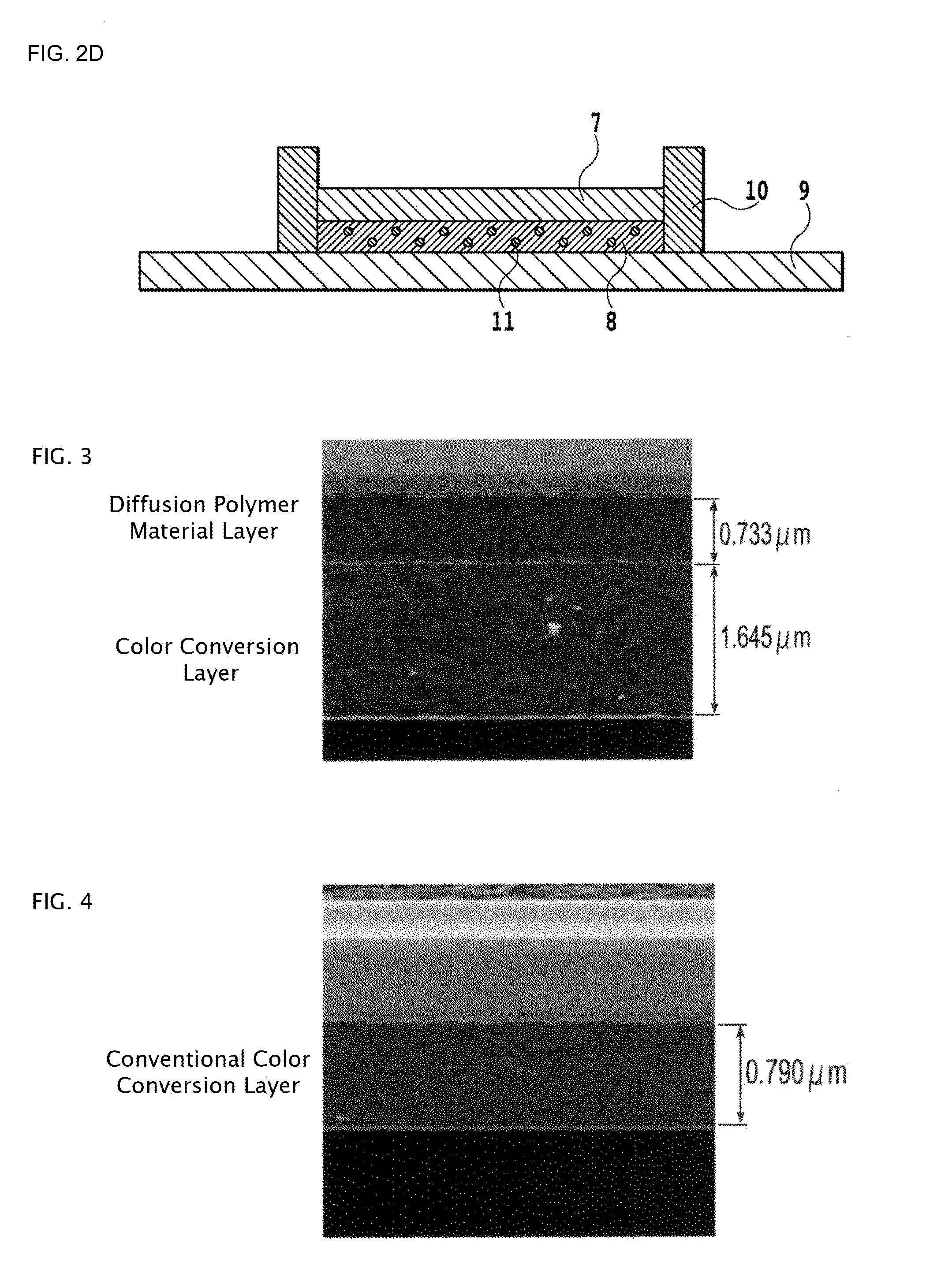Color conversion layer and manufacturing method for same
- Summary
- Abstract
- Description
- Claims
- Application Information
AI Technical Summary
Benefits of technology
Problems solved by technology
Method used
Image
Examples
example 1
[0094](Fabrication of the Color Conversion Material Layer 18)
[0095]A transparent positive type photoresist (OFPR-800 by Tokyo Ohka Kogyo Co., Ltd.) was applied onto a 50 mm×50 mm 1737 glass substrate manufactured by Corning Inc. Photolithography was used to fabricate columns of parallel banks, of width 20 μm, height 50 μm, and at a pitch of 60 μm, in a 20 mm×20 mm region in the center portion of the substrate.
[0096]Poly[(9,9-dioctylfluorene-2,7-diyl)-co-(1,4-phenylenevinylene)], which is a green color conversion material with a weight-average molecular weight of Mw=100,000 was dissolved in THF solvent, to prepare a green conversion material solution with concentration 1.5 wt %. The solution was applied within banks using an inkjet method in a nitrogen atmosphere. Thereafter, the substrate was dried by heating at 100° C. for 30 minutes, and a green color conversion material layer 18 was obtained. The film thickness was 0.8 μm.
[0097](Fabrication of the Diffusion Polymer Material Layer...
PUM
| Property | Measurement | Unit |
|---|---|---|
| Thickness | aaaaa | aaaaa |
| Molecular weight | aaaaa | aaaaa |
| Fluorescence quantum yield | aaaaa | aaaaa |
Abstract
Description
Claims
Application Information
 Login to View More
Login to View More - R&D
- Intellectual Property
- Life Sciences
- Materials
- Tech Scout
- Unparalleled Data Quality
- Higher Quality Content
- 60% Fewer Hallucinations
Browse by: Latest US Patents, China's latest patents, Technical Efficacy Thesaurus, Application Domain, Technology Topic, Popular Technical Reports.
© 2025 PatSnap. All rights reserved.Legal|Privacy policy|Modern Slavery Act Transparency Statement|Sitemap|About US| Contact US: help@patsnap.com



